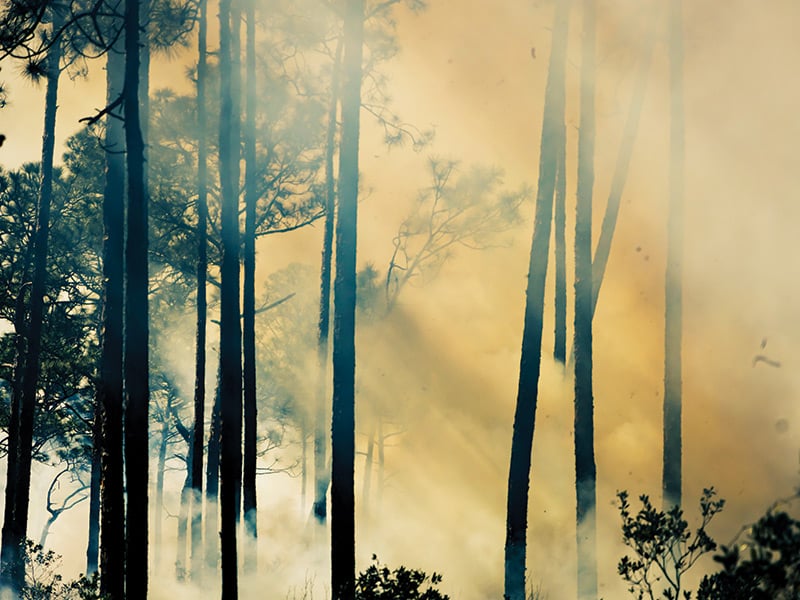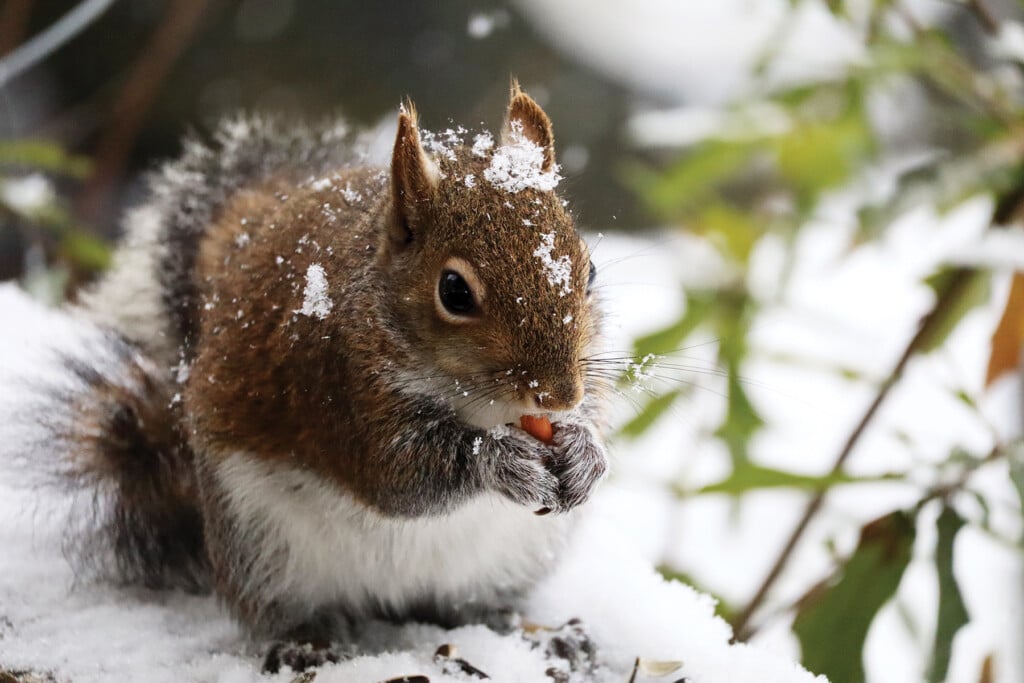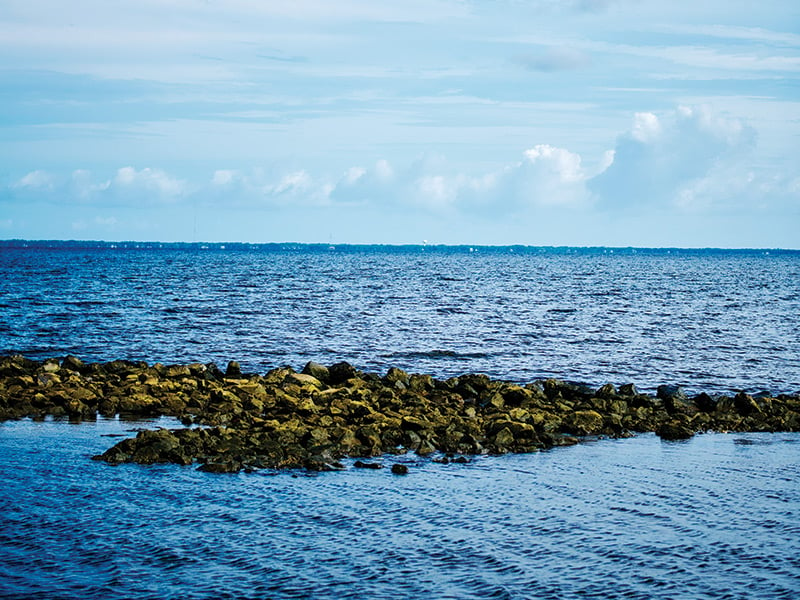Bringing Balance to the Wetlands
Conservation efforts return life to rare, threatened species at Deer Lake State Park

In 1996, the State of Florida acquired nearly 2,000 acres of wetland, upland and dune lake environment from The St. Joe Company. When Florida Department of Environmental Protection (DEP) employees first arrived, a walk-through assessment proved that invasive species had all but taken over the area now known as Deer Lake State Park.
But one lone flower painted a promising picture of hope.

White Fringed Orchid. Photography by Jeff Talbert
“They found a single white-fringed orchid,” said Jeff Talbert. “They were very excited because they hadn’t found that. They didn’t know that was down here anywhere.”
The impressive orchid should thrive naturally in wetland environments, but it’s a threatened species in Florida.
“We’ve gone from one white-fringed orchid to well over a thousand down here,” noted Talbert, a conservation project coordinator working at the state park.
Talbert knows the wetlands well. He became a park ranger for Deer Lake and Grayton Beach state parks in 2008. Today, wetland conservation is his focus. As part of an Atlanta Botanical Garden (ABG) extension program, Talbert and a team of field biologists are working alongside teams from the DEP to restore balance to protected wetlands in Walton County.
Originally owned by St. Joe during its paper milling days (1936–1996), the land acquired by the DEP in ’96 had, over those 60 years, lost many of its naturally occurring characteristics.
“For a long time, they didn’t burn out here,” Talbert said. “Some of these wetlands here haven’t seen fire in probably 70 or 80 years in some cases.”
Forest fire, Talbert said, has had a negative reputation since the early 1900s when fighting wildfires became common practice. Fire wasn’t introduced as a conservation tool until the first prescribed burn at Everglades National Park in 1958.

According to the Florida Fish and Wildlife Conservation Commission, fires caused by lightning and other natural effects once played a major role in forming Florida landscapes. Today, controlled and prescribed burns help to nourish and maintain wetland ecosystems like those found in Deer Lake State Park. Photography by Jeff Talbert
Deer Lake State Park’s wetlands and uplands should have been able to burn on their own every two to four years, Talbert said, but decades of hardwoods overgrowth, namely black titi, prevented that.
In 2015, ABG and the DEP received $9 million in funding from the National Fish and Wildlife Association’s Gulf Environmental Benefit Fund for their 10-year project proposal at the Deer Lake State Park wetlands.
“Our project objective is to bring that balance back to those wetlands.”
Though native, black titi shrubs spread quickly, and when overgrown, they become towering hardwood trees that stamp out other wildlife. Without prescribed burns, Talbert said that the white-fringed orchids, and other natives including pitcher plants, threadleaf sundews, spoonleaf sundews and orange milkwort that now thrive would not exist.
“All of these plants are what they call heliocentric; they’re sun-loving plants,” Talbert said, “so they need an open canopy. They can’t have shade. Once shade starts coming in, they start dying off.”
Over 10 years at Deer Lake State Park, ABG has helped to restore 310 acres to native origins. The DEP was tasked with operational management, providing equipment and hiring crews for clearing, burning and other tasks. ABG coordinated logistics, creating mapping for removal, clearing and burning, tracking progress and collecting scientific data.

Walking through coastal wetlands and uplands, one might have trouble differentiating the two. Still, the slightest change in elevation, inches, can create an entirely different ecosystem. Photography by Jeff Talbert
“Prior to any of this being cleared, we’d set up a baseline in 50-meter transects and take data every so often,” Talbert explained. “We’d see what was in there, how wet it was, the canopy cover, various things. Then we’d come in after they cleared and take data twice a year, so we can see over that long-term period how it’s changed.”
Talbert, with the ABG team and contributors from the DEP, prescribed fire by zones throughout the park. A single zone, 200 acres give or take, is burned in a single day. Burning helps prevent unpredictable wildfires and creates that natural balance needed in the wetland ecosystem.
“One of the things this project is doing is removing this huge fire risk along the edge of these wetlands, but it’s also helping the wetlands,” Talbert said. “We want to help restore these areas back to these very biodiverse ecosystems.”
Clearing and removal of invasives was a top priority in this project to make space for rare, threatened species to thrive. No herbicide was used in the clearing process.
“We didn’t want to introduce chemicals into this very rare ecosystem,” he said. “We wanted to do it without it, and we wanted to show that it was possible.”
In the last year of the project, Talbert said his team is in, what he called, “the cleanup phase” — consolidating piles, burning them and retreating areas to prevent returning invasives.
There is still work to be done, but Talbert said their efforts have provided a much-needed reset for the wetlands and set a standard for continued maintenance.
“They can come in here and burn this on a regular two-year rotation, and it will maintain itself,” Talbert said. “It will look just like this — it won’t get taken back over.”
In the summer of 2025, the decade-long project will come to an end.
“We are currently looking for money to move over to Grayton because we are nearly done here,” Talbert said. “Grayton has about 580 acres of wetlands that need this work.”
Looking out over the 300-plus acres and nearly 10 years of work, Talbert recalled the landscape as it was when he first arrived as a park ranger in 2008.
“I remember driving around at that time and not being able to get to places because it was too dense, too wet, too thick,” he said. “Now, this place is entirely different.”
Today, tall, native andropogon and wiregrass billow in the breeze; carnivorous sundews and pitcher plants contribute to the ecosystem; and the now plentiful white-fringed orchids continue to thrive with impressive blooms.
Then and now, Talbert said, “This is all just a snapshot in time.”
Down by the Dunes
On the south side of 30A,
Deer Lake State Park offers a haven for visitors looking to fish, swim, paddleboard and explore. The park’s namesake is one of 30A’s 15 coastal dune lakes — bodies of water found in dune ecosystems within two miles of the coast.
Each of the 15 dune lakes maintains an intermittent connection to the Gulf, creating an ever-changing ecosystem.
“One thing about the coastal dune lakes is that they are so rare that there is not a lot of research,” said Alison McDowell, an estuary scientist with the Choctawhatchee Basin Alliance (CBA).
A program of Northwest Florida State College, CBA is working to bridge that gap in research.
Studies from the early 2000s involved symmetry and vegetation surveys. Today, they conduct regular maintenance and monitoring.
Giant reed, an invasive bamboo-like species, can take over the shoreline, stamping out native species like smooth cordgrass and sawgrass. CBA works to maintain giant reed growth to prevent spreading. Torpedo grass and alligator weed are two big offenders. Those, McDowell said, they try to get rid of completely.
Water monitoring supports other research efforts and helps CBA identify culprits causing imbalanced nutrients. CBA monitors levels of total nitrogen, total phosphorus, chlorophyll, salinity, PH and dissolved oxygen.
“Nutrients are an indicator of a water body’s ability to support life,” McDowell said. “With too many nutrients, you can get algae blooms and low oxygen levels. But you want to have enough nutrients.”
Balance is key.

